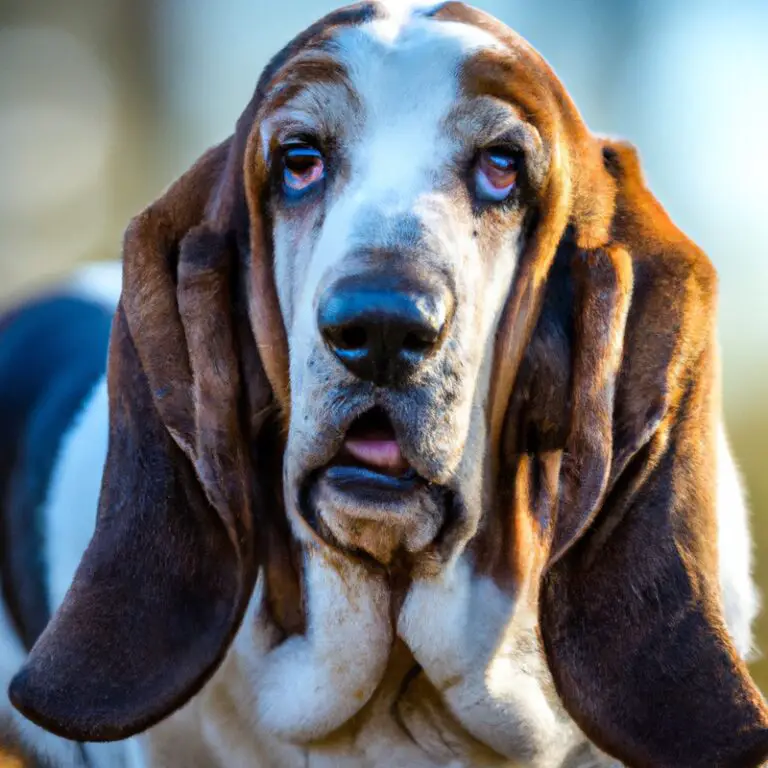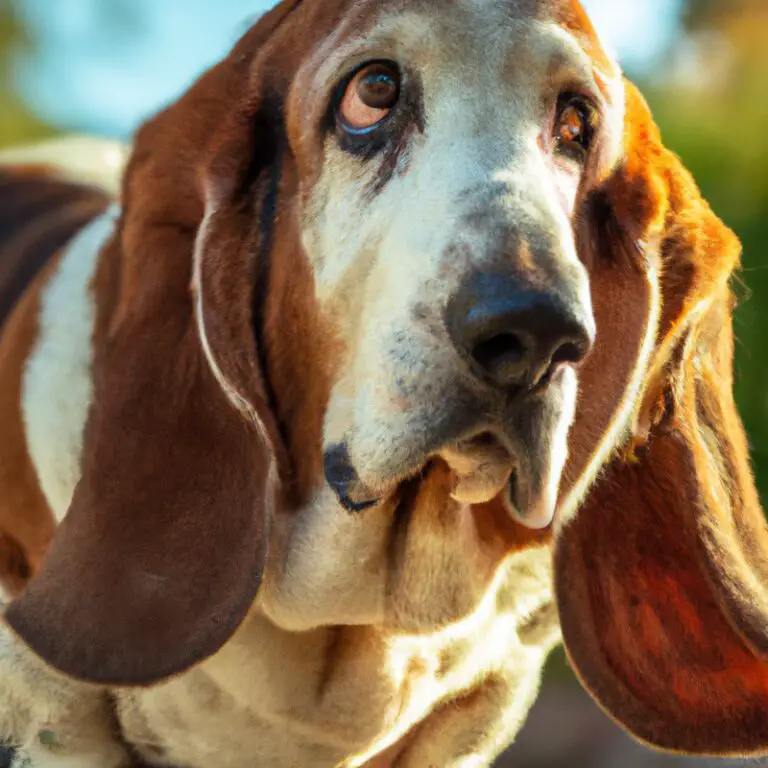How Do Basset Hounds Communicate With Their Owners?
Key Takeaways:
- Basset Hounds primarily communicate with their owners through their unique barking and howling sounds.
- Their body language, such as drooping ears and sad-looking eyes, also serves as a way of communication.
- Basset Hounds tend to use scent marking as a form of communication with their owners and other dogs.
- Training and socialization play a crucial role in enhancing the communication between Basset Hounds and their owners.
Understanding Basset Hounds: A Unique Breed Have you ever wondered how your Basset Hound communicates with you?
These charming dogs have their own distinct ways of expressing themselves, both verbally and non-verbally.
From their endearing body language to their melodic howls, Basset Hounds have a fascinating communication style that can deepen the bond between them and their owners.
In this article, we will explore the various ways Basset Hounds communicate, including their vocalizations, body movements, eye contact, and even scent marking.
By understanding their unique language, you can enhance your connection with these lovable hounds and become an even better dog parent.
| Methods of Communication | Description |
| Eye Contact | Basset Hounds use eye contact to express their emotions and understand their owner’s intentions. They may communicate their needs or desires through a prolonged gaze. |
| Body Language | Basset Hounds have various body language cues to communicate with their owners. They may wag their tail to express happiness, tuck their tail between their legs when fearful or nervous, or roll onto their back to show submission. |
| Vocalizations | Basset Hounds are known for their melodious howls and barks. They may use different vocalizations to communicate different messages, such as howling when they are lonely or barking to capture their owner’s attention. |
| Physical Touch | Basset Hounds often seek physical touch to communicate their affection or need for comfort. They may nuzzle against their owner’s leg or crawl onto their lap to establish a stronger bond. |
Understanding Basset Hounds: A Unique Breed
Basset Hound Characteristics: Communication Traits
Basset Hounds have unique communication traits that make them stand out. Their long ears and sad expressions often convey their emotions effectively.
Non-verbal communication is a significant aspect of how Basset Hounds express themselves.
Their body language, vocalizations, and tail wagging play a crucial role in communication. Basset Hounds also use eye contact and facial expressions to convey their needs and emotions.
Additionally, scent marking is an important communication method for them.
By understanding these traits, you can enhance your connection and develop a strong bond with your Basset Hound.
Body Language: How Basset Hounds Communicate Non-Verbally
Basset hounds communicate non-verbally through their body language. This includes various movements and postures that convey different messages.
Here are some key ways in which they communicate through their body language:
- Ears: Basset hounds have long, floppy ears that can provide insights into their mood. When their ears are relaxed and hanging down, it indicates a calm state. However, if their ears are raised, it may be a sign of alertness or curiosity.
- Tail: Basset hounds’ wagging tails can indicate their emotional state. A slow and gentle wag usually means they are happy and content. A faster wag may show excitement, while a tucked tail signifies fear or anxiety.
- Eyes: Their large, sad-looking eyes can convey a range of emotions. A relaxed gaze portrays calmness, while wide or startled eyes may suggest surprise or fear.
- Body posture: Basset hounds often have a droopy and relaxed posture. If their body is tense, arched, or they are leaning forward, it could indicate aggression or a desire to play.
- Rolling over: When a basset hound rolls onto its back, exposing its belly, it is a sign of submission and trust.
Understanding these non-verbal cues will help you better communicate and bond with your basset hound. Keep in mind that each dog is unique, so observe and learn their individual body language signals to enhance your connection.

Vocalization: Barking and Other Sounds
Basset Hounds are known for their unique vocalizations, including their signature deep, melodic bay. They use barks and howls to communicate various messages to their owners and other animals.
Barking is often a way for them to express their needs, such as wanting attention or alerting their owners to potential dangers.
Basset Hounds may also use other sounds, like whines and grumbles, to convey different emotions, such as frustration or excitement. Understanding these vocalizations can strengthen the bond between you and your Basset Hound, as you learn to interpret their needs and emotions.

Tail Wagging and Body Movements: What They Mean
Basset Hounds communicate a lot through their body language, particularly through their tails and general body movements.
When a Basset Hound wags its tail in a slow and relaxed manner, it usually means they are content and happy.
On the other hand, a fast and vigorous wag may indicate excitement or anticipation.
If their tail is tucked between their legs, it could mean fear or submission.
Pay attention to their body posture and movements too.
A relaxed and loose body indicates contentment, while a tense and stiff body suggests discomfort or unease.
By observing these cues, you can better understand what your Basset Hound is trying to communicate.

Eye Contact and Facial Expressions: Interpreting Basset Hound Signals
Communication with your Basset Hound involves observing their eye contact and facial expressions.
When your Basset Hound looks directly into your eyes, it’s a sign of affection and trust.
They use their expressive eyes to convey emotions such as happiness, excitement, or even concern.
Additionally, pay attention to their facial expressions, as Basset Hounds have long, droopy ears and a wrinkled forehead that can indicate various moods.
A relaxed and content facial expression means they are comfortable, while raised brows or a furrowed forehead may suggest they are unsure or worried.
By understanding and interpreting these signals, you can strengthen the bond between you and your Basset Hound.
Scents and Smells: Communication through Scent Marking
Basset Hounds have a strong sense of smell and use scent marking to communicate with others. They have scent glands in their paws and anal area that release unique odors.
By rubbing these areas on objects or surfaces, they leave their scent behind as a form of communication.
This lets other dogs know about their presence and territory. Scents and smells play a crucial role in a Basset Hound’s communication and social interactions with both humans and other animals.
Understanding and interpreting these scent markings can help us better understand our furry friends.
Understanding Basset Hound Behaviors: Signs of Distress or Happiness
Understanding Basset Hound Behaviors: Signs of Distress or Happiness Basset hounds communicate their emotions through various behaviors. When distressed, they may exhibit signs such as excessive drooling, whining, or hiding.
Conversely, a happy basset hound will wag its tail, have relaxed body language, and engage in playful behavior.
It’s important to pay attention to their signals and respond accordingly to ensure their well-being. Being attuned to your basset hound’s emotions strengthens the bond between you and helps create a happy and harmonious environment for both of you.
Building a Strong Bond: Communication Tips for Basset Hound Owners
Building a strong bond with your Basset Hound is all about effective communication.
Here are some tips to enhance your connection:
- Be patient and understanding: Bassets have a unique temperament, so take the time to understand their needs and quirks.
- Use positive reinforcement: Reward good behavior with treats and praise. This will motivate your Basset and strengthen your bond.
- Establish a routine: Bassets thrive on routine, so create a consistent schedule for feeding, playtime, and exercise.
- Practice active listening: Pay attention to your Basset’s body language and vocalizations. This will help you understand their emotions and respond accordingly.
- Maintain eye contact: Establishing eye contact with your Basset Hound while interacting shows them that you are engaged and attentive.
- Spend quality time together: Regularly engage in activities that your Basset Hound enjoys, such as walks, playtime, or training sessions.
- Offer physical affection: Bassets love physical touch, so provide plenty of gentle petting, belly rubs, and cuddles.
Remember, building a strong bond takes time and effort.
By implementing these communication tips, you’ll strengthen the connection with your Basset Hound and create a loving and trusting relationship.
Communicating with your Basset Hound: Techniques and Training
When it comes to communicating with your Basset Hound, there are a few techniques and training methods you can use:
- Use positive reinforcement: Reward your Basset Hound with treats or praise when they exhibit good behavior or respond to your commands. This will help them understand what you want from them.
- Be consistent: Use clear, simple commands and gestures consistently so that your Basset Hound can learn and remember them easily. Stick to a routine to establish a clear communication pattern.
- Use hand signals: Basset Hounds rely heavily on visual cues, so incorporating hand signals along with verbal commands can enhance communication. For example, use a palm facing down for “stay” and a pointing finger for “come.”
- Practice patience: Basset Hounds may be stubborn at times, so it’s important to stay patient during training sessions. Remain calm and avoid becoming frustrated, as this can hinder effective communication.
- Socialize your Basset Hound: Expose your Basset Hound to different people, animals, and environments from an early age. This will help them become more comfortable and confident in various social situations.
Remember, every Basset Hound is unique, so it’s important to understand their individual needs and preferences. With consistent training and patience, you can establish a strong and effective communication bond with your Basset Hound.
Common Challenges: Miscommunication and How to Overcome Them
One common challenge that Basset Hound owners may face is miscommunication with their furry friends. Bassets have their own unique ways of communicating, and it can sometimes be difficult for us to understand them.
However, there are a few strategies you can try to overcome this challenge and enhance your communication with your Basset Hound.
- Pay attention to body language: Basset Hounds communicate a lot through their body language. Observe their posture, tail wagging, and ear positions to understand their emotions and needs.
- Listen to vocalizations: Bassets have a range of vocalizations, including barking, howling, and whining. Pay attention to the different sounds they make and try to associate them with specific situations or needs.
- Be patient and observant: Take the time to observe your Basset Hound and learn their unique communication cues. Each dog may have their own individual ways of expressing themselves.
- Use positive reinforcement: When your Basset Hound communicates effectively, such as by following a command or showing desired behavior, reward them with praise, treats, or playtime. This will reinforce their communication efforts.
- Seek professional help if needed: If you are struggling to understand or communicate with your Basset Hound, consider seeking guidance from a professional dog trainer or behaviorist. They can provide valuable insights and personalized strategies.
By being attentive, patient, and open to learning, you can overcome the challenge of miscommunication and strengthen the bond with your Basset Hound.
Final Verdict
Understanding how Basset Hounds communicate with their owners is essential for building a strong and meaningful bond with these unique breeds.
Through their body language, vocalizations, tail wagging, eye contact, and scent marking, Basset Hounds convey their emotions and needs.
By paying attention to these signals and responding with patience, love, and appropriate training, we can enhance our connection with these lovable companions.
Effective communication is the key to soothing their distress and ensuring their happiness.
So, let’s listen, observe, and communicate with our Basset Hounds to create a harmonious and fulfilling relationship that lasts a lifetime.








